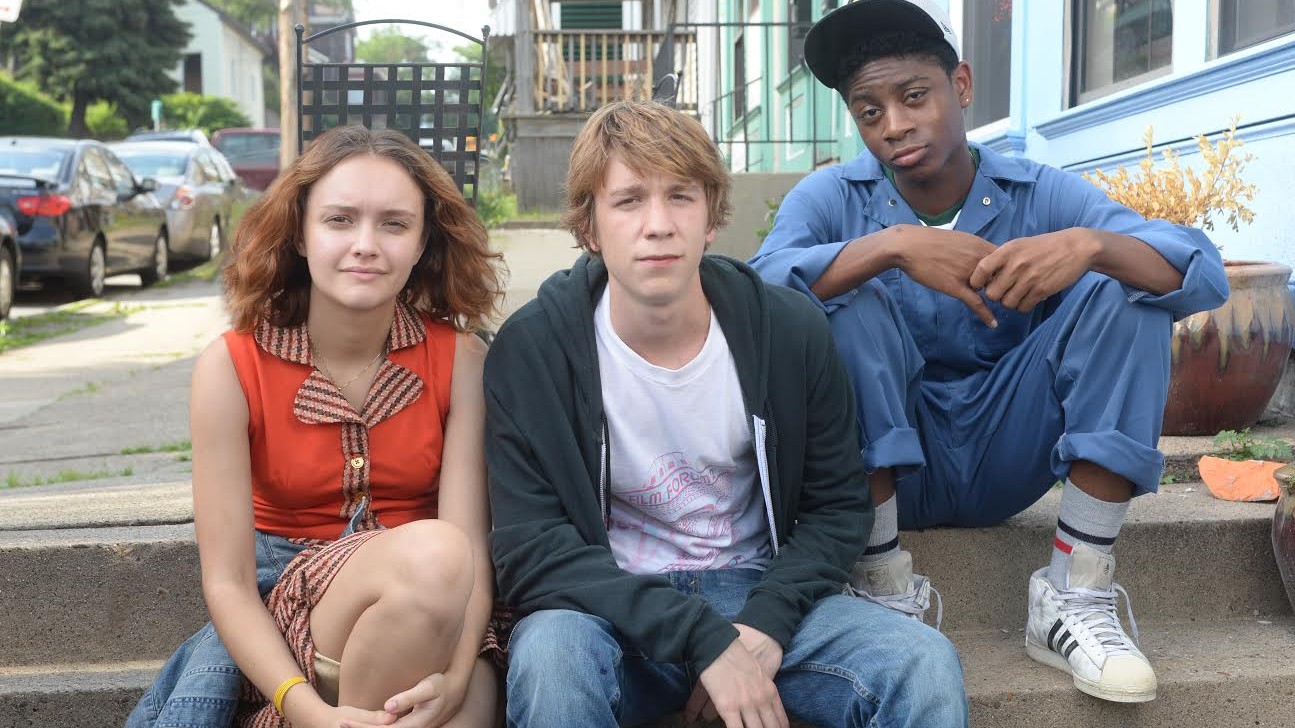It’s hard to deny the power of the two anchoring performances in Me and Earl and the Dying Girl—those of Thomas Mann, or Me, and Olivia Cooke, or the Dying Girl. Mann plays Greg, a reserved teenager whose high school life depends on a carefully cultivated neutrality and lack of involvement, soon threatened when his mother decides he should befriend an ailing classmate he barely knows. So we meet Rachel (Cooke), a teenager recently diagnosed with cancer who rejects Greg’s obligatory pity before she’s eventually charmed by his awkward magnetism.
Me and Earl and the Dying Girl thrives on the strength of these two characters and the easy chemistry of the perfectly cast young actors. Their first full scene together, wherein Greg breaks through Rachel’s depressed façade with some off-the-cuff observations about the attractive pillows in her room—don’t worry, it works better in context—is easily one of the film’s best.
Though this relationship is surely the film’s most important, it doesn’t always get the focus it deserves, as the film spends much of its time rounding out the supporting players in Greg’s life. Greg makes art-house parody films with his best friend, or “coworker” as he insists on calling him, Earl (RJ Cyler), he endures the doting of Rachel’s wino mother (Molly Shannon), he enjoys exotic foods courtesy of his anthropologist father (Nick Offerman), he watches movies during lunch in the office of a cool teacher (John Bernthal)—the list goes on.
There’s real poignancy to the tale, as Greg is forced to confront his own feelings of self-hatred along with a newfound fear of death that comes from being in such close proximity to someone who is really, truly, slowly dying.
There are certain clichés that almost inevitably come with any modern independent coming-of-age tale, and unfortunately, despite its strong lead performances, Me and Earl doesn’t completely avoid those clichés. The movie hinges upon the arc of Greg, a mostly well-sketched character whose crippling self-esteem issues come to the film’s forefront once he unwillingly embarks on a near-endless endeavor to create a movie for Rachel. There’s real poignancy to the tale, as Greg is forced to confront his own feelings of self-hatred along with a newfound fear of death that comes from being in such close proximity to someone who is really, truly, slowly dying.
It’s puzzling then, why director Alfonso Gomez-Rejon felt the need to dilute the poignant tale with so many extraneous stylistic choices, with so much quirk. The movie opens with an unrelated voiceover and a couple cutesy claymation interludes as Greg ponders the best way to begin a story—both the claymation interludes and the voiceover continue intermittently and unnecessarily throughout the film. In one scene, Earl and Greg get unexpectedly high, and even hallucinate giant costumed animals, after consuming some mysterious drugged comestibles. One puzzling subplot involves a pretty classmate who unknowingly leads Greg on, only for her to inevitably profess actual interest in him, though he’s hardly said more than a dozen words in her presence.
It’s not that these clichés are inherently bad, but it’s hard to justify their existence within the context of Me and Earl, when the film’s runtime would be better spent allowing the characters to develop naturally. While Greg may be well-drawn, many of the supporting players never get their fair share of screen time or development due to the film’s preoccupation with such quirk. In spite of his title billing, Earl for one never really develops beyond a straight-shooting comic relief who occasionally doles out information on the source of Greg’s insecurities, hinting at strained relationships with his parents—relationships that also get short shrift. The film is instead crowded with diversions that don’t really do anything to propel the narrative or its characters forward. Plus, they’re just not very funny or interesting.
It’s a shame, as Me and Earl and the Dying Girl is often far smarter than its cookie-cutter coming-of-age plot might imply. There’s a lot to enjoy when the film occasionally finds its groove, letting the characters develop and bounce off of each other naturally, but there’s a lot to groan about too. The former slightly outweighs the latter, and the film is made worth seeing thanks to the occasional flashes of brilliant writing and the strong cast.
Me and Earl and the Dying Girl opens at the ArcLight (and other major theaters) this Friday, June 12th.
Jeff Rindskopf
Jeff Rindskopf is a contributing writer for CINEMACY.


